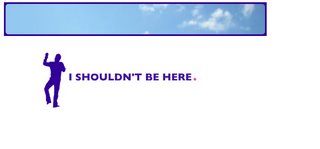To create campaigns that really stand out and encourage interaction, without annoying the user you have to match the customer insight with creative message and the placement. Place content in an appropriate place and invite the audience in a relevant way.
How about this for a radical strategy: sit your strategy guy next to your creative and sit both of them next to your media planner. By having this triumverate sitting in two or possibly even three different agencies (remunerated and measured on different metrics) is farcical.
 The majority of really succesful campaigns are based on this priciple: Ogilvy's Cisco Livecast where a live webcast took place within an ad unit specifically negotiated with the FT.com reached millions and 60% of those who viewed the unit asked a question to the presenter live and the campign repositioned Cisco from a faceless corporate to a company who listens to it' SMB audience.
The majority of really succesful campaigns are based on this priciple: Ogilvy's Cisco Livecast where a live webcast took place within an ad unit specifically negotiated with the FT.com reached millions and 60% of those who viewed the unit asked a question to the presenter live and the campign repositioned Cisco from a faceless corporate to a company who listens to it' SMB audience.There are instances where just a cracking piece of creative wins the day almost irrespective of media placement but these are few and far between.
The Cancer Research UK "I shouldn't be here" campaign illustrated the advances that the advances made in Cancer Research in the past 10 years had saved thousands of lives. Our rich media execution brought this to life.
 A figue appeared in the middle of the page with the title "I shouldn't be here" he then climbed back into the banner, where he should be, and explained that he had been diagnosed with testicular cancer but had survived thanks to CRUK. Intrusive, yes but with a reason and perfectly linked with the proposition.The campaign generated never before seen levels of donations.
A figue appeared in the middle of the page with the title "I shouldn't be here" he then climbed back into the banner, where he should be, and explained that he had been diagnosed with testicular cancer but had survived thanks to CRUK. Intrusive, yes but with a reason and perfectly linked with the proposition.The campaign generated never before seen levels of donations.
No comments:
Post a Comment